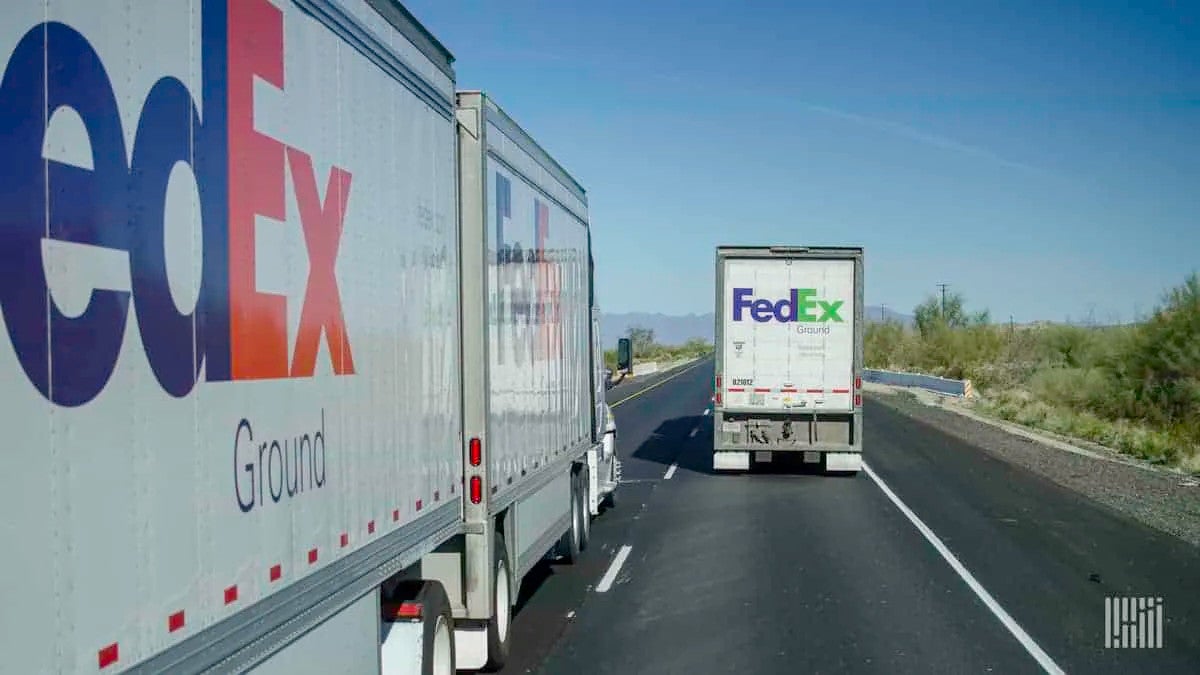In a note last Friday, September 16, J.P. Morgan reminded us that back in June it warned about a concerning drop in container volume out of China, based on FreightWaves SONAR Container Atlas data.

The firm titled its June 3 report “Watching the China Freight Wave,” which covered the slowdown in container markets and forewarned about a slowing U.S. domestic freight market.
Using the same data, on June 7, FreightWaves wrote an article titled “U.S. import demand is dropping off a cliff.” We saw container flows out of China to the U.S. drop by 36% between May 24 and June 7, 2022.

SONAR’s high-frequency supply chain data tracks the point-of-origin loadings (i.e. ports in China) and comes from container booking platforms that represent 70%+ of inbound containers to North America.
FreightWaves did get one thing wrong – we underestimated how long it would take the volume drop to show up at U.S. ports. We expected it to be apparent by July, but the backlog of containers was so massive that it wasn’t until August that the data was clear (Port of Los Angeles down 17% year-over-year).

At the time of the FreightWaves article, Stifel issued a scathing report of FreightWaves’ analysis. The “global wealth management and investment banking company” confused SONAR Point of Origin bookings data with Customs clearing data in the U.S. The difference is SONAR data measures when freight is loaded at its destination port, while U.S. Customs and Border Protection measures when it clears U.S. ports.

(Photo: U.S. Customs and Border Protection)
SONAR’s data (tracking container loadings out of China) will always lead U.S. Customs data by at least six weeks. This time, the data was stretched even more due to the container backlog, and took about 60+ days to show up.
There is no doubt that container volume is slowing quickly. Ocean container spot rates from China to the U.S. West Coast have dropped from $9,600 to $3,800 since our June report to today, a reflection of slowing demand. And by the way, right now is supposed to be the peak season for ocean containers.
There are signs on the ground that things are much worse in China. China Beige Book, a provider of economic data from China that isn’t filtered or manipulated by the Chinese government, has been warning about a much bigger slowdown in China than what official reports have suggested.
In recent weeks, SONAR’s Container Atlas has continued to show signs that global freight markets are continuing to weaken. Since September 1, container loadings bound for the U.S. have dropped by another one-third and now are below levels last seen in the summer of 2019.
FedEx’s warnings about a global recession are in large part based on what the global company is experiencing out of Asia. As its CEO stated, FedEx has seen a week-to-week volume slowdown since its investor day in late June.

With over 75% of container imports related to consumer goods, a slowdown should not be a shock. In fact, there have been a number of signs since March about a slowdown in the freight market.
On March 31, 2022, I wrote “Why I believe a freight recession is imminent,” based on the significant slowdown in U.S. trucking market conditions. This was the first warning that something was materially wrong in the 2022 freight market.
Freight markets are leading indicators of economic activity, often by months. The reason is that upstream suppliers need to source raw materials months before goods are manufactured and retailers have to ship products from wholesalers months before they end up in stores.
High-frequency freight market data enables you to see the goods economy months before everyone else. FreightWaves pioneered these datasets over the past several years, and we are just starting to learn their full ability in helping to track the massively opaque global goods economy.

This will become far more important in the future as the world shifts into a multipolar world, with competing geopolitical interests, disruptive events, and supply chains that prioritize resiliency over lowest costs.


Veer
So what strategies freight carriers with small fleet of 5-6 trucks should utilize to get through the times of recession ?
Deduction on fuel , insurance and on driver pay is out of the window.
Leasing companies are getting strict day by day to make their business recession proof. So , decreasing the down time or the repair expense will not work for everyone as not everyone is able to get hands on newer equipment to decrease the repair expense.
The cost to operate is either the same or increasing but the income is decreasing day by day as we all are witnessing the rate per mile these days.
William Mallonee
Tell ’em, Craig!!